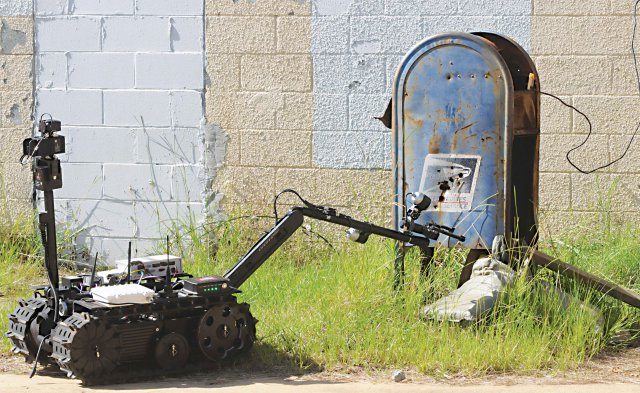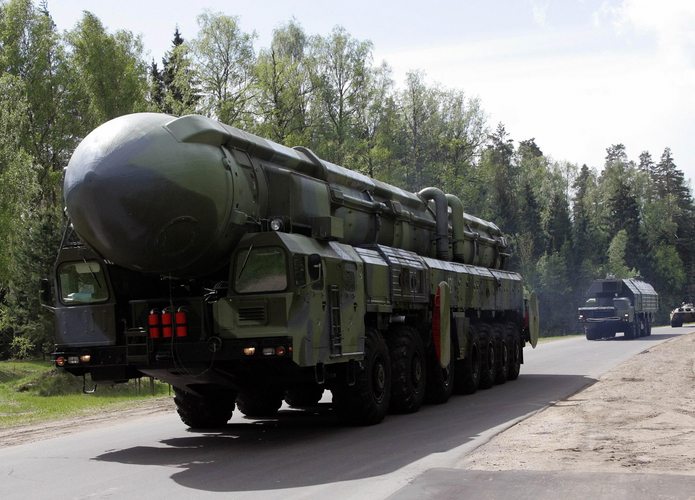The Maneuver Battle Lab revealed a glimpse into the future as the United States and North Atlantic Treaty Organization nations collaborated to use one another’s robots in military operations.
The lab conducted an interoperability experiment July 17 at the McKenna Urban Operations Complex to demonstrate how U.S., Turkish and German technical developers could use their respective controllers and integrated software to share and operate other country’s unmanned ground systems to complete tactical tasks.
Jim Parker, associate director of Ground Vehicle Robotics at the Tank Automotive Research, Development and Engineering Center in Warren, Mich., said the use of unmanned ground systems is in its infancy as a military capability, but engineers are making tremendous advancements toward interoperable robotics with NATO allies.
“Over the last decade, the majority of their use on the ground has been in support of explosive ordinance missions,” he said. “What we’re looking to do is expand the capability of the robotic platform so they can do more and more to help the Soldiers on the field.”
Tollie Strode, project officer with Unmanned Systems Team for the Maneuver Battle Lab, said after hours of software integration and testing, teams of engineers used the U.S., Turkish and German controllers to maneuver the Talon IV and Turkish Kaplan robots alongside Soldiers through an urban village and wooded environment. Future robots would be able to receive missions and self-navigate in the same terrain while being monitored by operators along scripted paths to detect explosive devices and reduce the risk of injuries among Soldiers.
Strode said the robots might also be used to complete sustainment tasks such as ammunition and water resupply or medical tasks including casualty evacuation. The ability to use another country’s unmanned ground systems presents a wide range of opportunities and benefits in missions ranging from peacekeeping to combat.
“We’re gaining a first step in gaining interoperability with our NATO allies, which is a key thrust going forward as well as providing inoperability standards that allows us to leverage into the commercial industry and give us advance technologies,” Parker said.
Officers and NCOs observed the robots and controllers in action to provide operational feedback about their interoperability. Capt. Stephen Akins, of Headquarters and Headquarters Company, 199th Infantry Brigade, recently graduated from Captains Career Course and looks forward to future advancement in the field.
“It’s a great opportunity to see the equipment and see what these new robots can do,” Akins said. “Instead of having a Soldier take a look at something suspicious, you could have an unmanned vehicle take a look … to avoid injury.”
Maj. James Farrer, executive officer of the Maneuver Battle Lab, said the experiment is a positive step in the process of creating technology that is efficient and effective for tomorrow’s warfare strategies.
“We all look to the future, and we all look forward to collaboration and having commonality and coalitions to make interoperability between nations easier,” he said. “I think experimentation, even in its current climate is even more important than before.”











